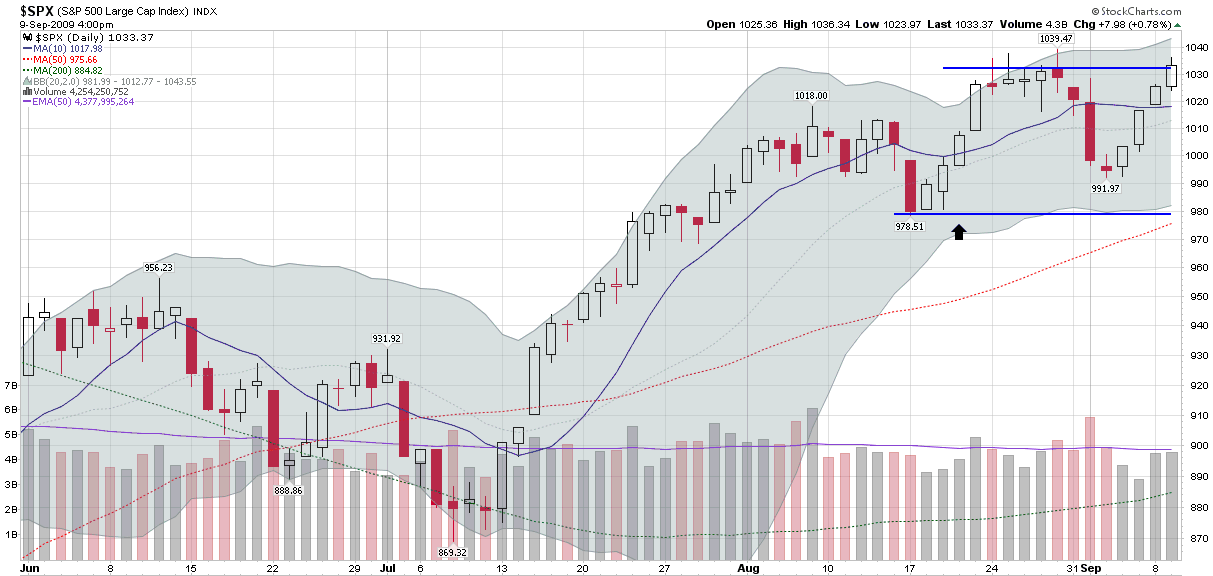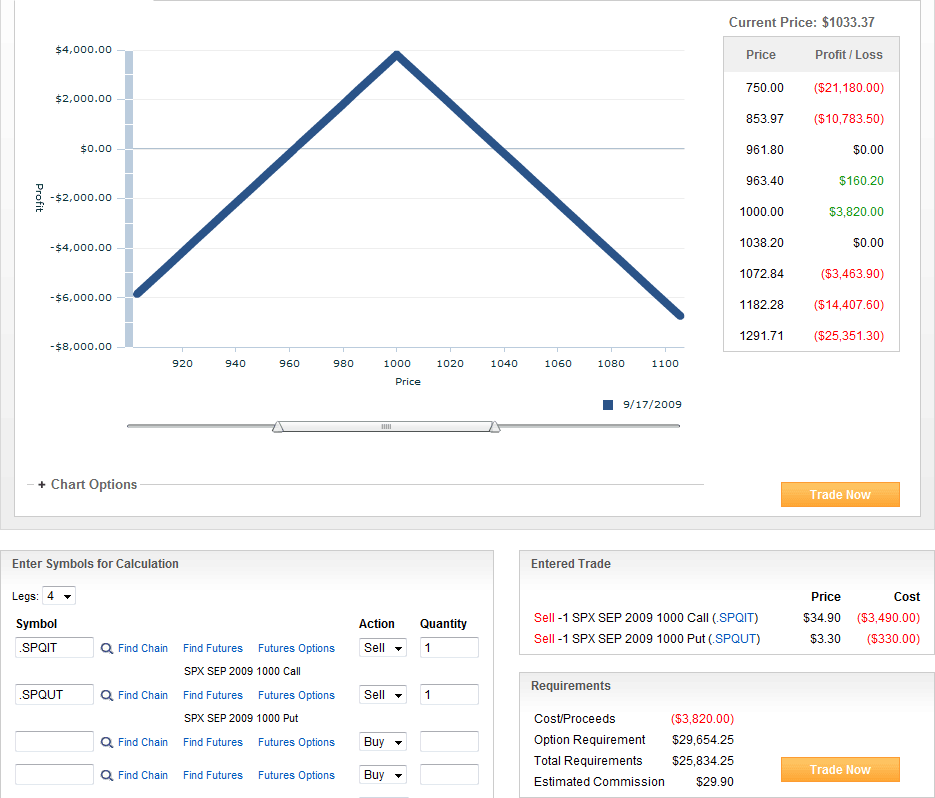Position Management for SPX Short Straddle
I suspect that when most investors make the jump from stocks to options, the most difficult issue for them to come to terms with is position management. With stocks, it is easy for an investor to reason that if a particular stock rises to a target price of X, he or she will take the profits and exit the position. By the same token, if the stock falls below Y, this means it is time to cut losses.
For options, the process becomes much more complicated. One of the complicating factors is certainly the potential for extreme percentage changes in an option position. It is not uncommon for an option to double in value for several consecutive days; alternatively an option can lose half of its value several days in a row.
Given all the questions I have received about how to manage options positions, going forward I have decided to share some of my thinking about position management using real-time case studies of options trades.
Let me offer up a taste of what I had in mind using a recent short straddle trade on the SPX that I first talked about on August 20th in The Sideways Play.
First, while I did not go into detail about the rationale for the trade at the time of the original post, one of the technical factors I found appealing was the possibility of the 1000 serving as a consolidation point, with SPX potentially trading in a narrow range that was defined by 978-1018 at the time. The chart below shows that following the initial post (black arrow), SPX subsequently rallied as high as 1040, closing a little over 1030 on August 27th. When SPX subsequently fell back below 1000 last week, there was reason to believe that the 1030 (closing) and 1040 (intraday) levels might serve as resistance. As described in SPX Short Straddle Still Hugging 1000 Level, the trade had started to yield some meaningful profits at this stage.

The graphic below is a snapshot of the position as of yesterday’s close. The original premium was $5000 per contract. At the close of trading yesterday, the position could have been closed out for $3820, yielding a profit of $1180 per contract. This is down from a profit of $1490 a week ago today when the SPX was still hugging the 1000 level. The change in profitability in the past week has been largely the result of directional movement (delta) in the form of a 30 point jump in SPX more than offsetting the time decay at work over the course of the week.

Note that in setting up my exits, I am completely ignoring the price of the actual options and prefer to focus on the underlying. In future posts, I will talk about a more holistic approach that encompasses not just the underlying, but also options prices, position Greeks and other factors.
For the record, the previous posts in this SPX short straddle series are:
An earlier two-part SPX short straddle case study may also be of interest:
For additional posts on these subjects, readers are encouraged to check out:


4 comments:
Yes, the transition from stocks to options is difficult for many.
I am constantly reminded of that when an option rookie gets concerned with knowing how to determine the break-even point for a trade.
Never mind that holding through expiration is a bad idea when you buy options - they want to know b/e based on holding that long.
I always tell them not to be concerned about b/e - but I do show them how to make the calculation.
They don't understand that selling at price higher than the price paid is a profit. They need a formula. That's very disconcerting.
Good comments, Mark.
I must say that you have been -- by far -- the best source of information I have seen on the web regarding options position management, risk management, exit strategies, planning, etc.
I think my next post on the subject should go back to the beginning about how to think about an options trade before you make the trade, contingency planning, etc.
With stocks, beginning investors tend to spend most of their time an energy finding the 'perfect stock' and then are not sure how to handle the position after they make the trade. With options, because valuations change so quickly, volatility and time decay change the value of the position even when the underlying doesn't move, etc., too many options rookies get overwhelmed and elect just to hold to expiration. As you point out, this is a mistake.
Maybe someday you and I (and perhaps some other options bloggers) can all mentally make the same trade and offer commentary on that trade as it unfolds. It would be an interesting experiment for the readers to see just how we think about a specific position, when we take action, etc.
Thanks for the comments,
-Bill
Bill & Mark,
I applaud your comments. That sounds like a great idea... Tracking a trade and talking about the counter-trades around an initial position. Follow-up trades are very important in managing overlay portfolio risk.
In my opinion, position management is more about deltas than any of the other Greeks - vega, theta or gamma. Yet, most of the option-related trading is about vol scalping at (usually) delta neutral.
Many people get delta one trades (long stock or short stock) but have a lot of trouble understanding how the delta of a position can more from zero - inside a straddle - to concerning - past a break even, in a trading day or two.
1x2s and other spreads on top of an underlying trade usually gives me blank stares from most, even seasoned, traders.
John,
You are one step ahead of me. I was going to dive into the issue of a snowballing delta (it is up to .89 in the straddle right now), but I think I need to take a step back and properly introduce all the Greeks first.
I sense the audience here is all over the place in terms of background and knowledge. At the very least, I want to come up with something I can refer back to later.
Interesting comment about the blank stares. I wonder how many options traders eventually settle on only a couple favorite trades and unwittingly put on blinders vis-a-vis the adjacent options world?
Perhaps it is time to distinguish between narrow or niche options expertise and a broader more comprehensive set of options knowledge and experience.
Cheers,
-Bill
Post a Comment